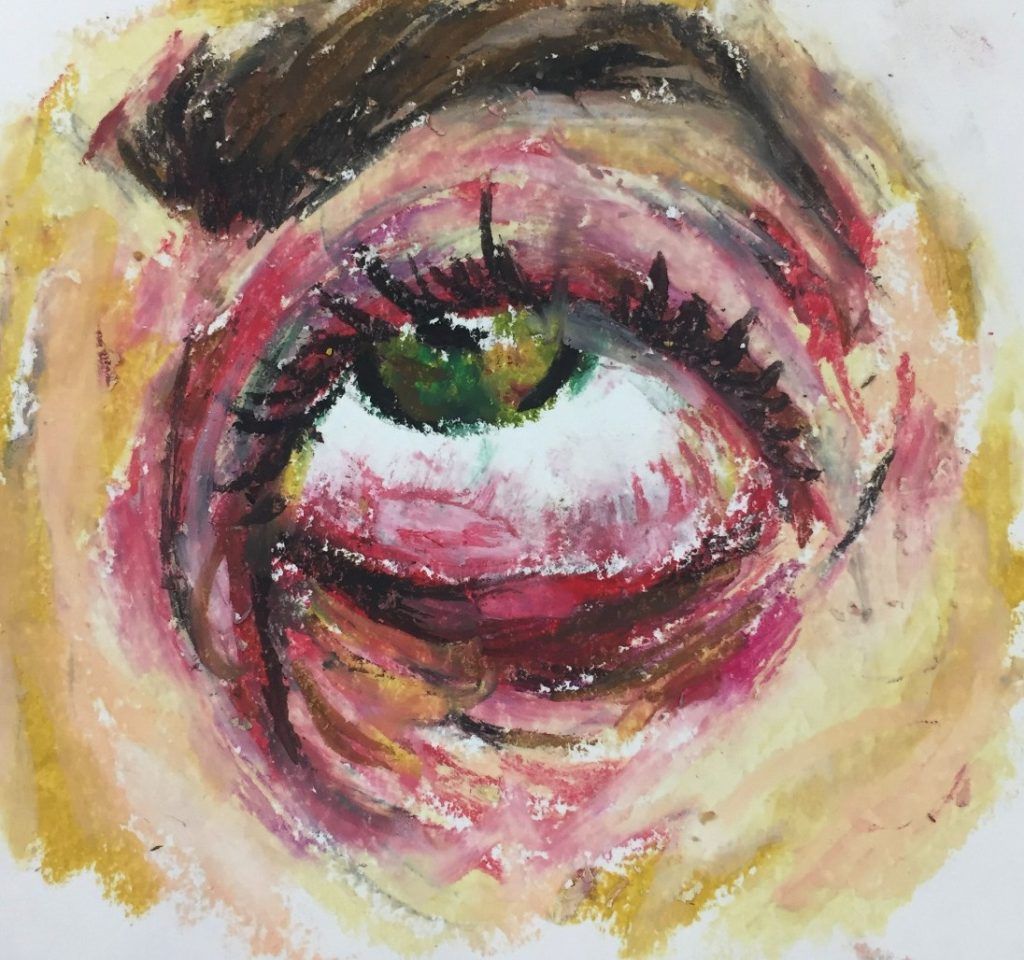Oil pastels offer a unique artistic medium, marrying vibrant colors with a distinct textural quality. Unlike traditional paints, they require no brushes or solvents, inviting a tactile and immediate approach to art creation. This article delves into the captivating world of oil pastel artwork, exploring the interplay of texture and imagery that imbues this medium with its distinct character.
Part 1: Unveiling the Textural Magic: Beyond Smooth Application

1. A Symphony of Strokes: From Delicate to Bold:
Oil pastels offer a range of textural possibilities depending on the pressure applied. Light strokes create a smooth, almost chalky effect, ideal for subtle details and layering. Conversely, applying oil pastels with a heavy hand creates a bold and expressive texture, perfect for capturing energy and movement.
2. Layering and Scumbling for Depth and Dimension:
The textural qualities of oil pastels allow for captivating layering techniques. Create a base layer with light, wispy strokes, then gradually build upon it with bolder applications. Scumbling, a technique where color is lightly applied in broken strokes, adds a sense of depth and a hazy, dreamlike quality to your artwork.
Part 2: Texture as Storytelling: Enhancing Visual Imagery
1. Juxtaposition of Textures for Visual Interest:

The interplay of textures is a vital element in oil pastel artwork, enhancing visual interest and depth within the composition. By combining smooth, blended areas with bold, textured strokes, artists can create a compelling juxtaposition that captivates the viewer’s attention and infuses the artwork with a sense of dynamism. Utilizing varied textures allows the artist to guide the viewer’s gaze, drawing attention to specific elements within the piece and establishing focal points that add visual intrigue and complexity. The juxtaposition of smooth and textured areas can serve to emphasize contrasts in the artwork, enhancing the overall aesthetic appeal and creating a multi-dimensional visual experience. This artistic technique not only adds depth and richness to the composition but also invites the viewer to engage with the artwork on a tactile and sensory level, further enriching their appreciation of the piece. Through the skillful manipulation of textures, artists can craft visually compelling and dynamic oil pastel artworks that resonate deeply with their audience.
2. Evoking Emotions Through Texture:
Texture plays a crucial role in art by evoking emotions and enhancing the viewer’s experience. When used deliberately, texture can be a powerful tool for eliciting specific emotional responses. For instance, employing rough and scratchy strokes in a piece may suggest feelings of anxiety or unrest, infusing the artwork with a sense of tension and unease. On the other hand, utilizing smooth, blended textures can create a visual sense of serenity and calmness, evoking feelings of peace and tranquility in the viewer. As an artist, it’s important to consider the emotions you aim to convey and choose your textural techniques accordingly. By aligning your textural choices with your artistic intent, you can effectively imbue your work with the intended emotional resonance, engaging the viewer on a deeper level and enriching their experience with your art. Through deliberate manipulation of texture, artists can create visually stimulating and emotionally evocative pieces that resonate profoundly with their audience.

Part 3: Subject and Technique: A Harmonious Blend
1. Realistic Landscapes: Capturing the Essence of Nature:
Oil pastels are well-suited for capturing the diverse textural variations and rich visual complexity found in landscapes. When portraying natural scenery, artists can utilize light, feathery strokes to depict the soft, billowy formations of clouds, while employing more textured and rugged strokes to convey the imposing grandeur of mountains and rocky terrain. By experimenting with layering techniques, artists can create a compelling sense of depth and perspective in their artwork. This can be achieved by layering colors to simulate the depth of a lush forest or the expanse of a vast, open sky. In addition to strokes and layering, blending techniques can be used to seamlessly transition between different elements within the landscape. For example, the merging of land and water or the interplay of light and shadow. Through the use of varied strokes, layering, and blending, artists can effectively capture the intricate nuances and visual splendor of natural landscapes. They bring their unique characteristics to life in vibrant and evocative oil pastel compositions.
2. Abstract Explorations: Unleashing Creativity and Emotion:
The textural qualities of oil pastels are not limited to representational art. Embrace them for abstract creations. Experiment with scraping techniques to reveal underlying colors, or use heavy impasto (thick application) to create a sense of three-dimensionality. Let the textures guide your artistic exploration and evoke a sense of emotion in the viewer.

Part 4: Preserving Your Creation: Finishing Touches and Display Options
1. Protecting Your Artwork: Fixing and Varnishing:
Oil pastels, due to their waxy composition, can be susceptible to smudging, particularly in artworks with heavy texture. To safeguard your completed masterpiece, it is advisable to apply a fixative spray. This protective layer acts as a barrier, preserving the vibrancy and integrity of the colors, preventing any potential accidental smudging. Furthermore, for added protection, we recommend considering applying a light coat of varnish, especially for pieces that will be displayed in areas with high light exposure. The varnish not only provides an additional layer of defense against smudging but also shields the artwork from potential damage caused by UV rays, preserving its beauty and longevity. By taking these preventive measures, artists can ensure that their oil pastel creations remain pristine and vibrant. This enables people to enjoy and admire them for years to come, regardless of environmental challenges.
2. Framing and Matting: Enhancing the Visual Impact:
Framing your oil pastel artwork not only protects it but also elevates its presentation. Choose a frame that complements the colors and overall style of your artwork. Consider using a mat to create space between the artwork and the frame, drawing further attention to the unique textural qualities of your creation.

In conclusion, oil pastels offer a captivating artistic medium that transcends mere color application. Their unique textural qualities become an integral part of the visual language, adding depth, dimension, and emotional impact to your artwork. Embrace the tactile nature of oil pastels. Experiment with layering and mark-making techniques. Embark on a creative journey where texture and imagery intertwine to create truly captivating works of art.


